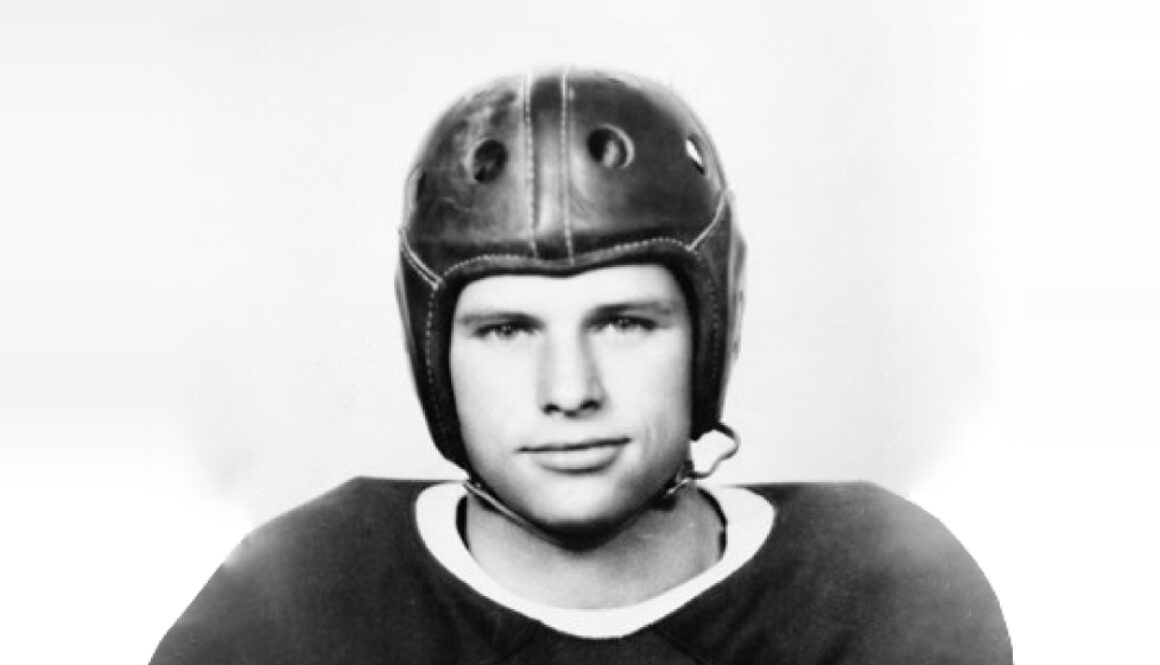Texas Legend Davey O’Brien
Davey O’Brien had a simple task when he became the starting quarterback for the Frogs in 1937. He had to replace the legendary Sammy Baugh who put up huge numbers and played three positions. Not only did O’Brien match Baugh by excelling at three positions, but he also eventually led TCU to a national championship and won the Heisman Trophy.
O’Brien, who was only 5’ 7”, started his football journey in Dallas at Woodrow Wilson High School where he was a three-year starter, played quarterback, defensive back, and punter, and earned all-state honors.
O’Brien started his career at TCU in 1935 as the backup to Baugh before taking over as the starting QB in 1937. The Frogs went 4-4-2 that season, but O’Brien showed promise and was named First-Team All- Southwest Conference.
The 1938 season was the one that would propel O’Brien onto the national stage. He threw for 1,457 yards and 19 touchdowns. He broke the conference record for most yards in a season and set the record for most rushing and passing plays in a season, a record that still stands today. He won both the Heisman and the Maxwell awards, the only player at that point to earn both in the same year.
On top of his individual excellence, the Frogs outscored their opponents 269-60 and allowed only one opponent to score more than seven points during an undefeated season TCU went on to win the Sugar Bowl against Carnegie Tech and was crowned national champions of the Associated Press Poll.
The Philadelphia Eagles picked O’Brien fourth overall in the 1939 NFL draft based on the potential shown in his record-shattering senior season. He was the first Heisman trophy winner to play in the NFL, but the Eagles struggled in the two years O’Brien was there, finishing last in the division both years. Not that O’Brien didn’t do his part, however, as he threw for 1,324 yards in his rookie season, breaking Sammy Baugh’s record.
His second year was hindered by appendectomy surgery before the season began, but he once again led the league in several passing categories. The Eagles failed to improve their record from the previous season though, and after the end of the season, O’Brien retired from the NFL.
O’Brien’s career was astounding in almost every metric. He continued to play three positions, even into the NFL where he recorded four interceptions and recorded a 40.7-yard punting average on top of his passing records. O’Brien ended his professional career with 2,614 passing yards and 11 touchdown passes and was chosen All Pro and selected to the Pro Bowl (NFL All-Star game).
After retiring from professional football, O’Brien became an FBI agent for ten years. In 1950, he resigned and went to work for H.L. Hunt in land development and later entered the oil business. He also served as an advisor to Hunt during the founding of the American Football League. During this time, he moved back to Dallas. O’Brien was inducted into the College Football Hall of Fame in 1955 and the Texas Sports Hall of Fame in 1956. He also served as the color commentator for Dallas Cowboys telecasts from 1960 to 1964. In 1971, O’Brien was diagnosed with cancer and underwent surgery to remove the disease, but eventually passed away in 1977.
While small in stature, Davey O’Brien is one of the biggest stars in TCU history and undoubtedly one of the best quarterbacks in the history of college football. He is a candidate for the Ideal Frog Award presented by Ideal Partners. Click here to learn more and cast your vote.


